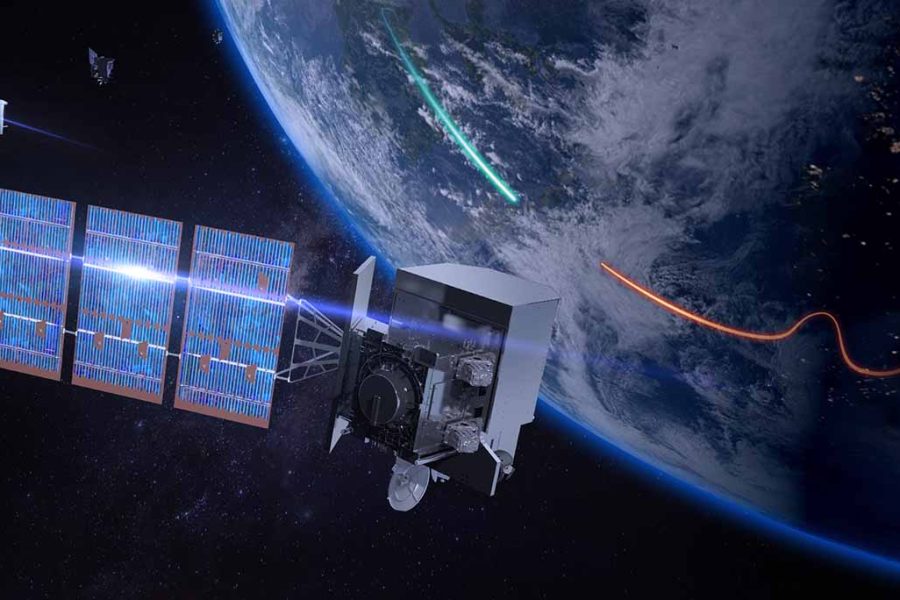The Missile Defense Agency is moving quickly to gather ideas for President Donald Trump’s proposed “Iron Dome for America” and hopes to make progress on some within the next two years.
In a Jan. 31 “request for information,” MDA asked contractors to suggest ways to meet the missile defense architecture’s requirements as laid out in Trump’s Jan. 27 executive order. An industry day is planned for Feb. 18—a breakneck pace by typical Pentagon standards.
The new missile defense system is envisioned as a series of “epochs,” or objective timelines for demonstrating capability. “Epoch 1” would extend no later than Dec. 31, 2026; Epochs 2 and 3 would follow at two-year intervals, and Epoch 4 would cover everything from 2031 and beyond.
Among the core capabilities MDA wants in the new missile umbrella defense are:
- A Hypersonic and Ballistic Tracking Space Sensor layer
- Proliferated space-based interceptors capable of boost phase intercept
- Underlayer and terminal-phase intercept capabilities postured to defeat a countervalue attack
- A Custody Layer of the Proliferated Warfighter Space Architecture
- Capabilities to defeat missile attacks prior to launch and in the boost phase
- Nonkinetic capabilities to augment kinetic methods
Patrycja Bazylczyk, a research associate with the Missile Defense Project at the Center for Strategic and International Studies, told Air & Space Forces Magazine that the timelines are “exceedingly short” for some of those capabilities, but noted that MDA’s caveat that they only need to be demonstrated offers a path forward.
“There might be an opportunity for industry to demonstrate these capabilities, and to really have those capabilities shine over the next four years or so,” she said.
But some of the capabilities MDA envisions may already be available or under development in other programs and agencies, said Bazylczyk.
Charles Galbreath, a retired Space Force colonel and fellow with AFA’s Mitchell Institute for Aerospace Studies, agreed.
Bazylczyk cited two Hypersonic and Ballistic Tracking Space Sensor prototype satellites—one built by L3Harris and one by Northrop Grumman—launched in February 2024 under a collaborative arrangement between MDA and the Space Force, according to budget documents. The program is scheduled to conduct testing through fiscal 2027, then would be transferred to the service for “operational fielding.” But with additional funding the effort could accelerate to 2026.
The Space Development Agency is also developing a missile warning system. Galbraith said SDA plans to have enough missile warning and tracking satellites in various orbits to provide global coverage for its Proliferated Warfighter Space Architecture by April 2027. With extra funding, those timelines could move up to meet “Epoch 1.”
SDA has already awarded contracts for satellites that do even more than detect and track launches, but that could also provide fire control—the ability to target and cue interceptors to take down missile threats.
Boeing’s Millennium Space Systems, under an April 2024 contract, is to build eight fire control satellites. The ground systems to support those satellites is to be built by Kratos under a separate November 2024 deal. In theory, these elements could be key parts of the custody layer envisioned in Trump’s order. The spacecraft are expected to launch in late 2026 and could demonstrate capabilities in time to be included in Epoch 1.
Taken together, Bazylczyk said, “we’ve already demonstrated a space sensor capability, and so I’m excited to see that acceleration of a lot of these space sensor capabilities.”
There are also interceptors in use receiving upgrades that could be included in early Epochs of the “Iron Dome”: MDA was already planning to spend hundreds of millions of dollars on the Terminal High Altitude Area Defense (THAAD) system, operated by the Army; and the Aegis system and its SM-3 interceptors, operated by the Navy.
Other capabilities, however, are still in early development, and experts are unsure how quickly they could be tested and fielded.
Ideas for space-based interceptors or nonkinetic weapons in orbit date back decades, said Galbreath and others. Most agree that recent developments make those concepts more feasible today, but actually demonstrating them in the next five years will be a tall order.
“I’m not entirely sure about whether or not these timelines are necessarily feasible,” Bazylczyk said of space-based interceptors and MDA’s Epochs. “I would be interested in seeing what industry presents, especially in response to this RFI. It’s showing a demand signal for space-based capabilities, and hopefully industry response to that signal.”
Bazylczyk’s colleagues at CSIS, Tom Karako and Clayton Swope, offered a similar take in an op-ed for SpaceNews.
“The significant level of technological change, the unalterable fact that space has shifted from a sanctuary to a warfighting domain today, and evolving missile and nuclear threat landscape calls for a reevaluation of the feasibility and desirability of a space-based missile defense layer,” they wrote, adding that the Pentagon needs to gather ideas from industry to understand “what’s within the realm of the possible.”
Rebeccah L. Heinrichs, a senior fellow at Hudson Institute, noted in her own analysis that the Iron Dome concept will require “initiating and accelerating technologies that will take time to mature,” though “space-located sensors and interceptors are the most effective means of neutralizing potential threats.”
On the other end of the spectrum, Todd Harrison of the American Enterprise Institute estimated the cost and scale needed to make space-based interceptors work, concluding his analysis by saying “while the costs have come down and the technology has matured, the physics of space-based interceptors has not changed.” Bottom line: Providing global coverage against even just a few missiles could require thousands of interceptors in low-Earth orbit.
Not surprisingly, industry is enthusiastic about the opportunity to show what it can do. In quarterly earnings calls in recent weeks, executives from L3Harris, Northrop Grumman, and Lockheed Martin all touted their companies’ missile defense work when asked about the potential competition for work to deliver a U.S. Iron Dome system.
